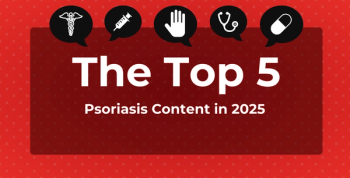
Cardiovascular Disease Is Preventable, and Digital Tools Can Help, Authors Find
With everyone carrying a smartphone, there's no reason why digital health tools and apps cannot be leveraged to hold at-risk patients accountable for cardiovascular health.
Two cardiologists writing for a major European journal called for increasing personalized care for cardiovascular health (CVH), by identifying those at risk much earlier than we now do and by using mobile phones that people carry around to boost patient accountability for their own care.
David M. Leistner, MD, and Ulf Landmesser, MD, both of the Department of Cardiology at Charité University Medicine in Berlin, Germany, writing for CardioPulse in the European Heart Journal, noted that the shift toward maintenance of cardiovascular health has been called a “public health revolution” and that 75% of early cardiovascular disease (CVD) is preventable.
CVH, they wrote, is defined as the absence of “manifest CVD” alongside optimal behaviors—not smoking, maintaining a body mass index of <25 kg/m2, a good diet, and physical activity—and 3 clinical factors of untreated blood pressure of <120/<80mmHg, untreated total cholesterol of <200 mg/dL, and fasting blood glucose of <100mg/dL. However, they wrote that genetics and lifestyle factors play a significant role in the clinical factors, and thus a genetic analysis could help identify those at long-term risk of CVD.
Understanding which patients have poor CVH but do not have CVD is important, because it can help identify which patients most need lifestyle vs medication. And, knowledge of cardiovascular risk can be key to other aspects of health, they wrote. “Interestingly,” they wrote, “the benefits of CVH metrics were also linked to non-cardiovascular conditions as cancer incidence, cognition, depressive symptoms, and health-related quality of life.”
The authors recommend both a personalized health strategy that takes advantage of what they call “the genomic revolution” and using digital tools, especially mobile health, to both collect data and make patients aware in real time of environmental conditions that contribute to poor CVH.
Of note, the CardioMEMS heart failure system has been used to reduce heart failure readmissions by combining biosensors and wearables. The authors note that by 2020, 90% of people over age 6 will have a smartphone, which they say will change the field of cardiovascular prevention.
Networks of exceptionally high-risk patients can be closely monitored, both by giving patients tools that increase their individual awareness and boost personal accountability. The long-held idea that patients can contribute to their own care has arrived, and digital health tools will track what patients are doing—or not doing—to help themselves. As patients see a direct connection between what they eat, how much they exercise, and certain environments, it can change behavior.
“The strong correlation between health behaviors and ideal health factors suggest that individuals can largely contribute to the maintenance of CVH through health behaviors,” they wrote. “An individualized prevention strategy integrating modern network strategies, genetic information and eHealth technologies will be the key to preserving and maintaining CVH from childhood throughout the lifespan with the potential to markedly improve CVH.”
Reference
Leistner DM, Landmesser U. Maintaining cardiovascular health in the digital era [published January 1, 2019]. Eur Heart J. doi:10.1093/eurheartj/ehy790.
Newsletter
Stay ahead of policy, cost, and value—subscribe to AJMC for expert insights at the intersection of clinical care and health economics.








































